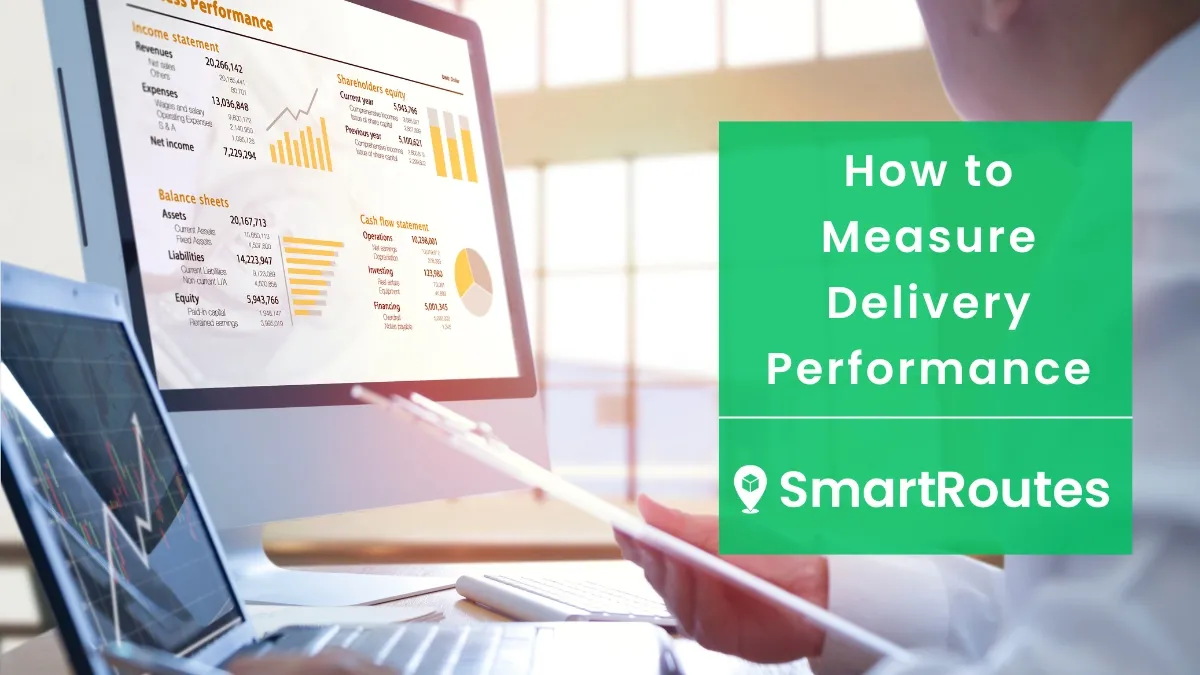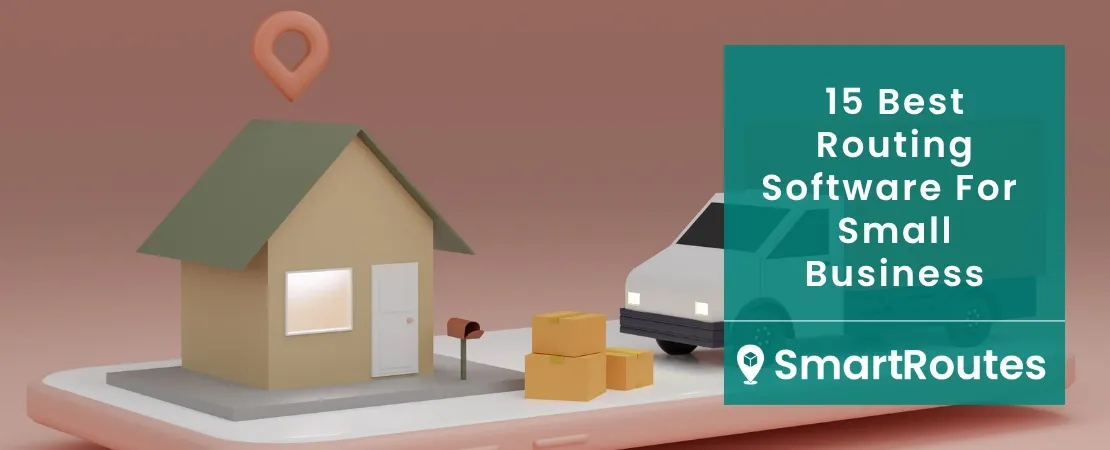Quick Summary
- If you plan more than a couple of multi‑stop routes a week, dedicated delivery routing software pays for itself fast.
- Look for route optimization software, multi-stop route planning, a mobile driver app, proof of delivery, and customer notifications as essential features.
- Key operational constraints for small teams include time windows, vehicle capacities, geographic clustering, and barcode scanning.
- Check pricing transparency, API documentation, and support quality to avoid unexpected overhead.
- Start with a free trial, validate accurate ETAs and driver satisfaction on a real delivery day to help you choose the best routing software for your small business.
Small businesses often struggle with manual route planning, especially as delivery volumes grow.
Admin time expands, fuel costs increase, and customer queries multiply.
The right delivery routing software helps manage fleets, optimizes routes in real time, and gives managers visibility over drivers, deliveries, and customer communications.
Whether you run a small delivery business, manage a delivery fleet, or are a fleet manager overseeing multiple drivers, choosing the right delivery routing system can improve operational efficiency, driver satisfaction, and customer service.
Below is a practical list of 15 top routing software for small businesses.
15 Top Routing Software Options at a Glance
1. SmartRoutes: Complete delivery routing software with fleet management and driver app support.
2. Google Maps: Free tool for basic multi-stop route planning, suitable for small delivery businesses.
3. Badger Maps: Optimized visit plans for field sales teams and territory management for fleet managers.
4. Upper: User-friendly platform with route optimization, proof of delivery, and customer notifications.
5. EasyRoutes by Roundtrip: Shopify-native delivery planner with mobile driver app and barcode scanning.
6. Spoke (formerly Circuit): Multi-stop route optimization with stop-based pricing and real-time driver tracking.
7. Fleetroot: Regional solution for delivery businesses with live fleet tracking and dispatch management.
8. Routific: Streamlined route optimization for multi-depot delivery fleets with operational analytics.
9. OptimoRoute: Supports recurring service visits with vehicle capacities and time window management.
10. Route4Me: Flexible route planning software with add-ons for delivery fleet management and barcode scanning.
11. Onfleet: Premium last-mile delivery management with GPS fleet tracking and automated customer notifications.
12. WorkWave Route Manager: Enterprise-ready dispatch management and route optimization for large delivery businesses.
13. Locus: AI-driven logistics management platform with real-time rerouting and traffic integration.
14. Track-POD: Proof of delivery focused solution with multi-stop route optimization and driver app.
15. LogiNext Mile: Real-time rerouting, last-mile logistics, and predictive route optimization for mixed fleets.
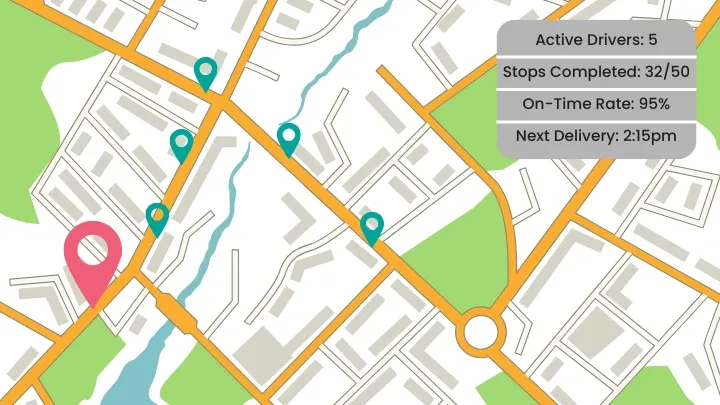
How We Evaluated these Tools
We focused on the needs of small businesses and delivery fleets:
- Core features: route optimization, multi-stop route planning, mobile driver app, proof of delivery, customer notifications, and barcode scanning options.
- Operational constraints: time windows, vehicle capacities, zones or geographic clustering of stops, and support for multi-depot workflows.
- Usability: clean user interface, fast setup, spreadsheet import, and accurate ETAs to improve customer & driver satisfaction.
- Integrations: compatibility with eCommerce platforms such as Shopify and WooCommerce, API documentation, and options for automation in delivery routing software.
- Pricing fit: transparent entry plans, predictable growth costs, and flexibility for delivery businesses of all sizes.
- Advanced considerations: fleet management capabilities, dispatch management tools, and real-time rerouting to handle unexpected delays.
For small businesses, options for routing software include platforms like SmartRoutes, Spoke, Routific, and OptimoRoute. When selecting software for route planning, consider route optimization capabilities, multi-stop planning, vehicle capacity management, time windows, mobile driver apps, and proof of delivery.

Our Review of The 15 Best Routing Software Options for Small Business in 2025
Finding the best routing software for a small business can feel overwhelming with so many options on the market.
To save you time, we reviewed 15 of the most effective tools for route planning, delivery management, and dispatch.
Each option balances features like time windows, vehicle capacities, barcode scanning, and customer notifications so you can compare what works best for your budget and delivery operations.
SmartRoutes Route Planning Software
Streamline your entire delivery process, all from one platform

1) SmartRoutes
Best for: delivery businesses that want full delivery management on a budget.
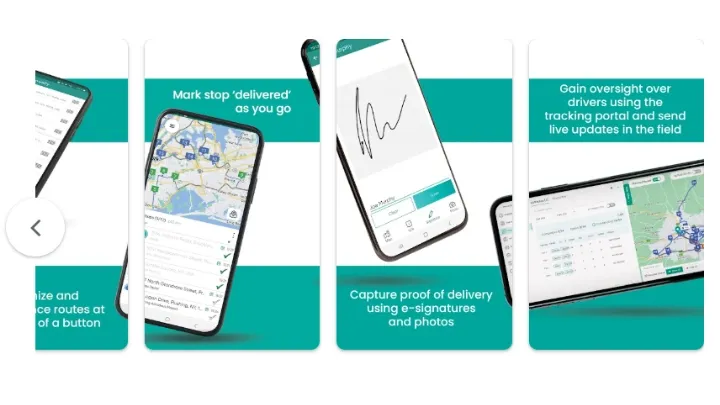
Highlights
- Multi‑stop route optimization with time windows, geographic clustering, and driver shifts.
- Driver app with live GPS tracking, proof of delivery via e-signature or photo, and barcode scanning.
- Customer notifications with accurate ETAs reduce inbound queries and improve customer satisfaction.
- Integrations for Shopify and WooCommerce, plus spreadsheet imports and API documentation for custom workflows.
- Dispatch management features for assigning routes and monitoring real‑time rerouting.
Limitations
- Wide range of features can require short onboarding before teams reach full efficiency.
Pricing
- From €29 per vehicle per month on the Starter tier, with higher tiers for advanced features and volume.
2) Google Maps
Best for: solo drivers or very small teams that need directions occasionally.
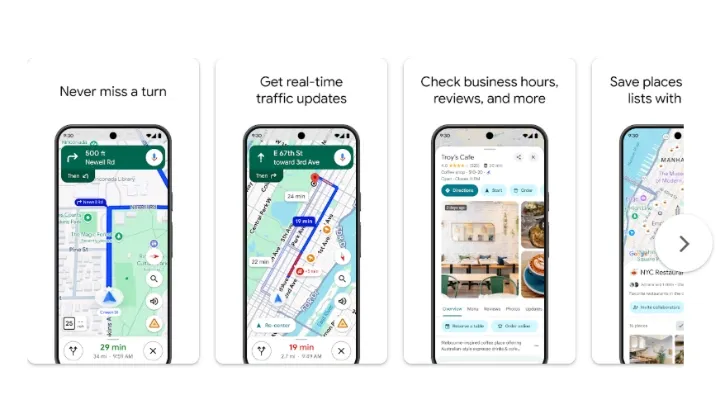
Highlights
- Free and universally familiar, making it an easy starting point for anyone planning routes.
- Supports multi-stop directions, though limited to a smaller number of waypoints.
- Reliable turn-by-turn navigation with real-time traffic updates.
- Works across devices and integrates with Google accounts for saved locations.
Limitations
- Stop limits (typically capped at 10) make it unsuitable for delivery-heavy operations.
- Lacks delivery-specific features like route optimization, barcode scanning, proof of delivery, or driver tracking.
- No dispatch or customer communication tools.
Pricing
- Free for individuals and small teams. Limits apply to stops per trip.
3) Badger Maps
Best for: field sales and service reps that prioritize in-person sales visits and account coverage over high-volume package delivery.
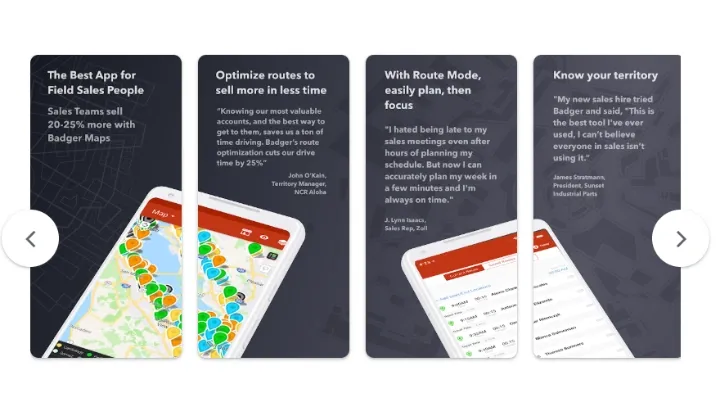
Highlights
- Designed for outside sales teams to visualize leads, accounts, and opportunities on a map.
- Optimizes daily visit sequences to minimize travel time.
- Provides territory management tools, such as grouping accounts by geography or priority.
- Integrates with leading CRMs (like Salesforce) to sync contact and meeting data.
- Useful for industries like medical devices, real estate, and B2B services.
Limitations
- Lacks parcel delivery tools such as barcode scanning, proof of delivery, or multi-depot workflows.
- Less effective for logistics-focused businesses that handle large volumes of deliveries.
Pricing
- From $58 per user per month on monthly billing, with free trials available.
4) Upper
Best for: small delivery teams that want a clean UI and straightforward pricing.
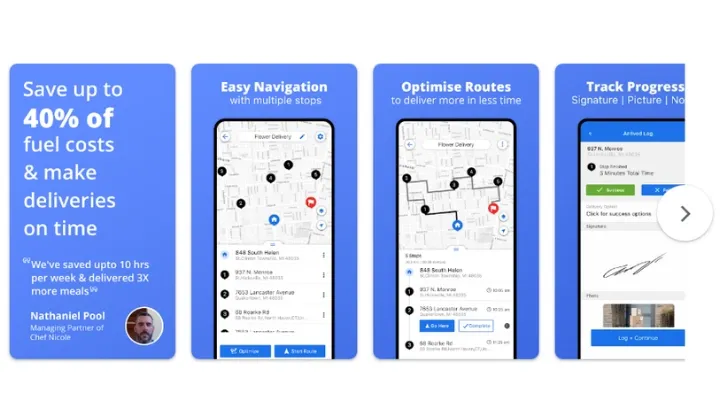
Highlights
- Optimizes routes quickly with support for time windows, zones, and vehicle capacity settings.
- Admins get live tracking of drivers and delivery progress.
- Offers proof of delivery options, including e-signatures and photos.
- Imports orders easily from spreadsheets and integrates with eCommerce platforms.
- Customer notifications available via SMS or email for delivery updates.
Limitations
- Some advanced analytics and reporting features are only available in higher pricing tiers.
- Doesn’t yet provide extensive third-party logistics (3PL) or warehouse integrations.
Pricing
- Essential from $40 per user per month on annual billing, $50 on monthly.
5) EasyRoutes by Roundtrip
Best for: teams that want to manage delivery routes inside Shopify without juggling multiple platforms.
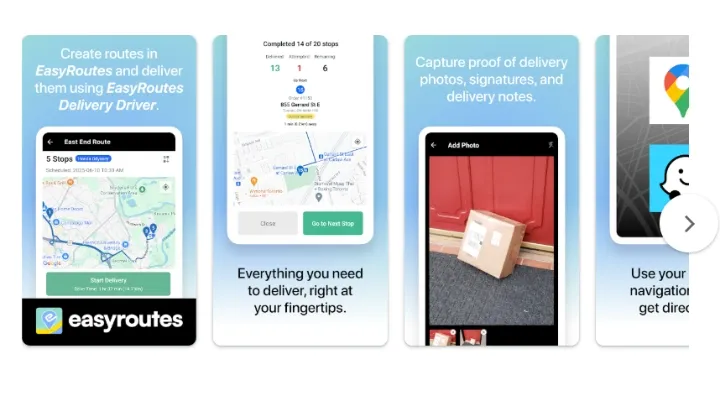
Highlights
- Built directly into Shopify, so orders flow seamlessly into route planning.
- Generates optimized delivery routes in just a few clicks, reducing manual work.
- Provides a driver app with step-by-step directions, proof of delivery capture, and real-time status updates.
- Offers printable manifests, delivery notes, and labels to streamline order handoff.
- Customers receive automated delivery notifications with live tracking links.
Limitations
- Primarily designed for Shopify merchants, so businesses not using Shopify will find the feature set limiting.
- Reporting and analytics are basic compared to enterprise-level platforms.
Pricing
- From $30 per month on the Shopify App Store, with tiered plans and a free trial.
6) Spoke (formerly Circuit for Teams)
Best for: teams that want user-friendly software and don’t mind a per-stop billing model tied to delivery volumes.
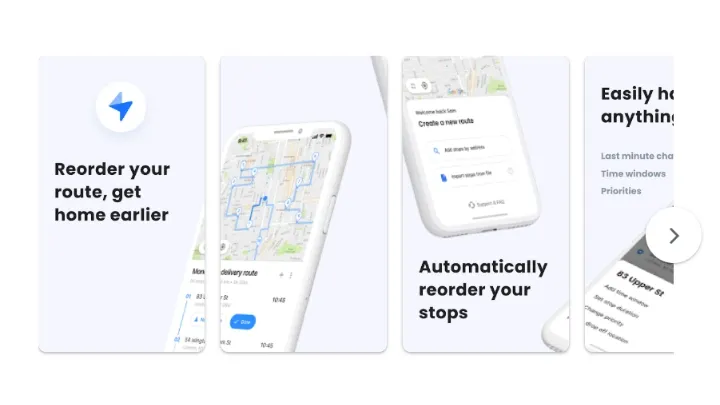
Highlights
- Offers route optimization with features like time windows, driver tracking, and proof of delivery.
- Includes a dedicated driver app for easy navigation and task management.
- Customer notifications are built-in, keeping recipients informed with accurate ETAs.
- Pricing is structured around the number of stops per month, making it flexible for smaller businesses starting out.
- Cloud-based setup ensures fast onboarding without heavy IT requirements.
Limitations
- Per-stop overage charges mean costs can fluctuate significantly if monthly delivery volumes vary.
- Limited integrations compared to some competitors in this list.
- Lacks advanced depot or warehouse workflow tools.
Pricing
- Starter tier: $100/month includes 500 stops, higher tiers available (up to $300/month for up to 1,000 stops). Each plan had a per-stop overage fee applied beyond that.
7) Fleetroot
Best for: small businesses seeking local support.
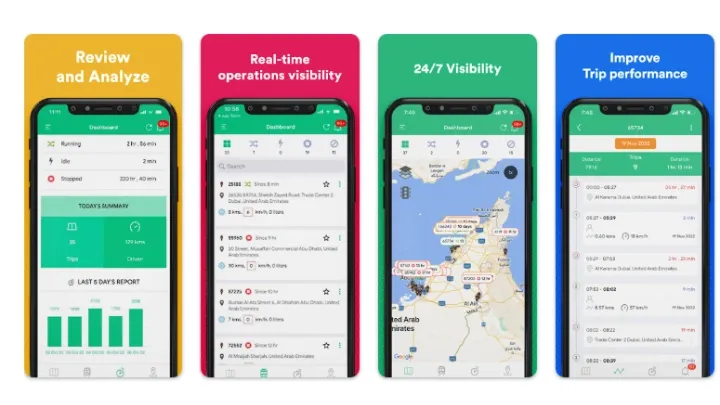
Highlights
- Combines delivery management with broader fleet tracking and logistics tools.
- Supports live driver tracking, basic dispatch management, and customer notifications.
- Provides a mobile driver app with navigation and proof of delivery features.
- Offers integrations for vehicle telematics and IoT sensors for businesses needing connected fleet oversight.
- Free tier available, making it accessible to very small teams.
Limitations
- Feature set is lighter than specialized last-mile platforms, especially for high-volume routing.
Pricing
- Free tier available. Business Starter at $79 per month.
8) Routific
Best for: teams that want simple, reliable route planning software that prioritizes efficiency and driver usability.
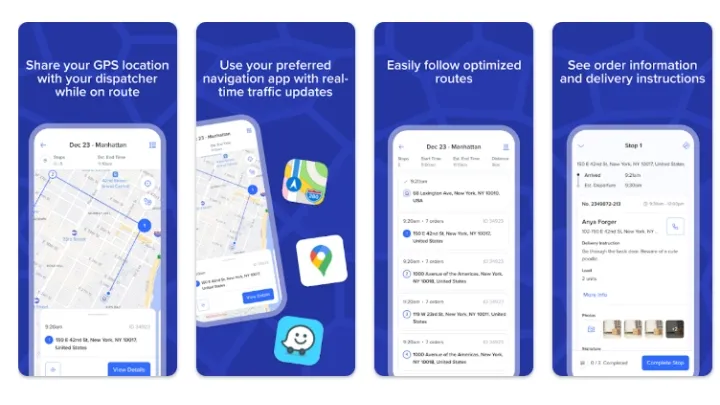
Highlights
- Streamlined route optimization with support for time windows, multiple depots, and vehicle capacities.
- Clean driver app design ensures high driver acceptability and easy use.
- Imports orders via spreadsheet or API, reducing manual entry.
- Provides analytics on route efficiency, miles saved, and delivery times.
- Cloud-based setup ensures quick onboarding and minimal IT overhead.
Limitations
- Does not offer full delivery management features such as advanced proof of delivery options or customer notifications on all plans.
- Less suited for large-scale logistics operations.
Pricing
- They have a freemium model with the first 100 orders per month free, then $150 for 100–1,500 orders/month as a flat fee with the ability to add additional stops in multiples of 100, incurring an additional cost.
9) OptimoRoute
Best for: teams that need advanced scheduling for deliveries and field services with recurring stops.
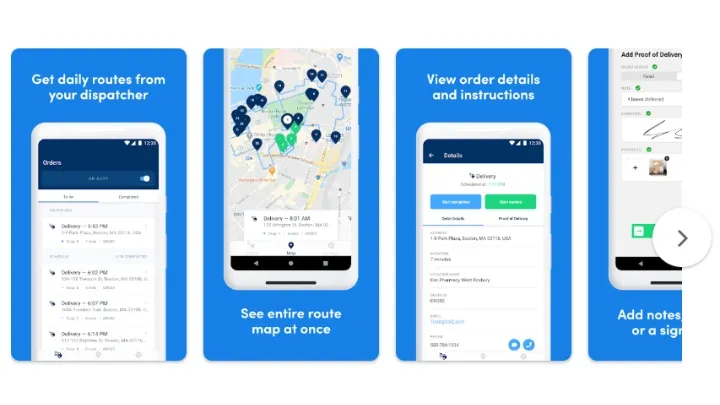
Highlights
- Supports multi-day route planning, recurring deliveries, and service scheduling.
- Optimizes routes with time windows, driver shifts, and vehicle capacities.
- Provides analytics for route efficiency, on-time performance, and customer satisfaction.
- Offers customer notifications, proof of delivery options, and GPS tracking.
- Integrates with eCommerce platforms, CRMs, and ERP systems for automated order import.
Limitations
- Some small teams may find the feature set more complex than needed.
- Mobile app can be less intuitive compared with simpler SMB-focused tools.
Pricing
- Starts at per-driver monthly tiers ($39 per driver per month for their starter package).
10) Route4Me
Best for: teams that want a highly configurable route planning software that can scale with growing needs.
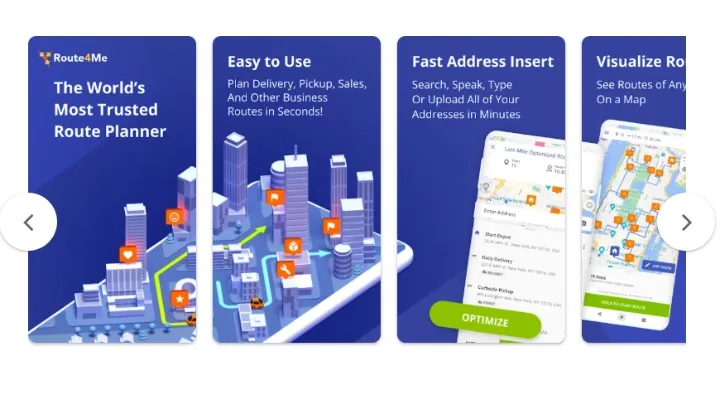
Highlights
- Multi-stop route optimization with support for vehicle capacities and time windows.
- Driver app with GPS tracking, delivery status updates, and proof of delivery.
- Marketplace of add-ons allows integration with various fleet management and dispatch tools.
- Supports barcode scanning, route clustering, and API access for custom automation. Flexible for both small teams and mid-sized businesses with growing delivery volumes.
Limitations
- Can become costly when using multiple add-ons.
- Some users report the interface is less intuitive compared with simpler solutions.
Pricing
- Intro package for ‘regular vehicles’ starts at $75 per driver per month with a 5-driver minimum. Commercial truck plans begin at $100 per driver per month, also with a 5-driver minimum. A range of add-ons can be included, costing $5 to $25 per driver per month.
11) Onfleet
Best for: teams that want a premium, scalable last-mile delivery solution with strong driver and customer visibility.
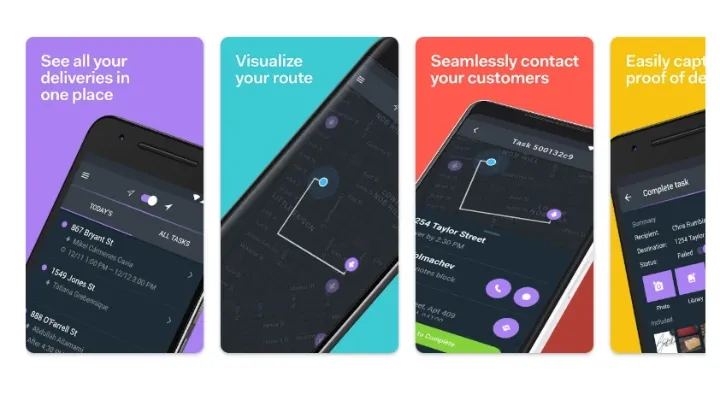
Highlights
- Advanced route optimization that accounts for time windows, traffic, and vehicle capacities.
- Real-time driver tracking and progress updates via a mobile app.
- Customer notifications with estimated arrival times improve satisfaction and reduce inbound inquiries.
- Supports multiple proof of delivery methods, including e-signatures, photos, and barcode scanning.
- API access and integrations with eCommerce platforms and logistics tools allow automation and custom workflows.
Limitations
- Higher entry pricing may be a barrier for very small teams.
- Some advanced reporting and analytics require higher-tier plans.
Pricing
- Starting at $599 per month which include up to 2500 ‘tasks’ and unlimited users. (They define tasks as either a pickup or delivery performed at a destination).
12) WorkWave Route Manager
Best for: teams that anticipate rapid growth and require scalable routing and fleet management solutions.
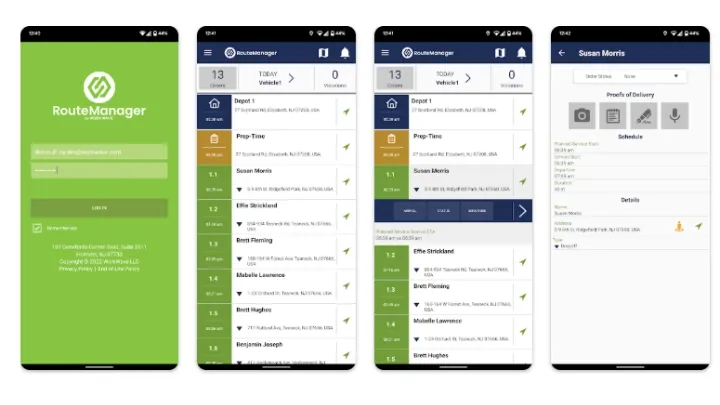
Highlights
- Comprehensive dispatch management with route optimization, driver progress tracking, and GPS fleet tracking.
- Handles time windows, vehicle capacities, and barcode scanning.
- Offers analytics and reporting for logistics and operational efficiency.
- Integrates with CRM, ERP, and inventory systems.
- Supports multi-depot operations and advanced routing constraints.
Limitations
- Can be more complex than smaller businesses need.
- Pricing is quote-based, so may not suit micro-businesses with tight budgets.
Pricing
- Prices start at $54 per vehicle per month with a 5 vehicle minimum.
13) Locus
Best for: teams that want predictive route optimization and analytics for efficiency and sustainability.
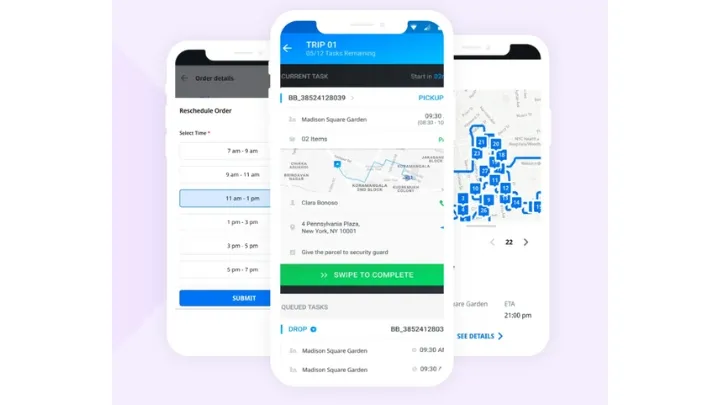
Highlights
- Uses machine learning to optimize last-mile logistics and improve route efficiency.
- Supports real-time rerouting, traffic integration, and dynamic delivery adjustments.
- Offers analytics dashboards to track operational KPIs, sustainability metrics, and driver performance.
- Integrates with multiple order management systems and APIs for automation.
- Supports multi-depot routing, time windows, and geographic clustering.
Limitations
- Enterprise-focused, with a learning curve for smaller teams.
- Pricing is quote-based and may be high for micro-businesses.
Pricing
- Quote-based; depends on volume and region.
14) Track-POD
Best for: teams that need reliable proof of delivery and want to eliminate paper processes
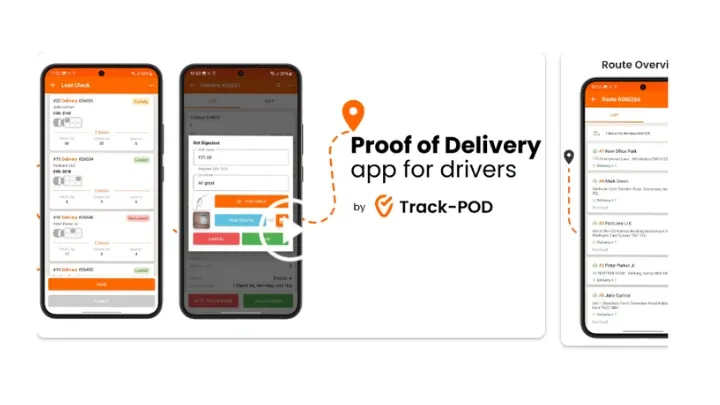
Highlights
- Provides digital proof of delivery with e-signatures, photos, and barcode scanning.
- Optimizes multi-stop routes with time windows and vehicle capacity constraints.
- Includes a mobile driver app for real-time updates and task management.
- Sends automatic customer notifications and tracking links.
- Integrates with eCommerce and logistics systems via API.
Limitations
- Route optimization features are simpler than some enterprise platforms.
- Reporting and analytics are basic compared with larger solutions.
Pricing
- You can shoes to pay per driver or per order. Per driver pricing starts at $59 per month (3 driver minimum) and per order starts at $285 for 1500 orders (with additional orders incurring an additional charge)
15) LogiNext Mile
Best for: teams that want predictive route optimization and operational visibility.
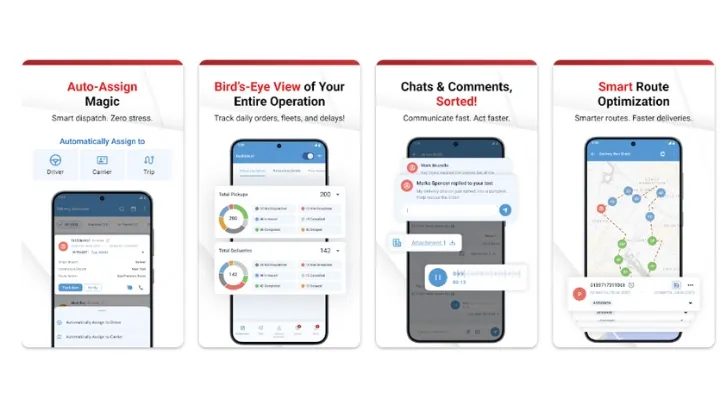
Highlights
- Leverages AI for route optimization with traffic, time windows, and vehicle capacities.
- Offers real-time driver tracking, dynamic rerouting, and automated customer notifications.
- Provides dashboards for fleet performance, on-time delivery, and route efficiency.
- Supports multi-depot planning and integration with ERP, CRM, and eCommerce systems.
- Ideal for mixed fleets and high-volume last-mile operations.
Limitations
- Enterprise focus may be overkill for micro-businesses.
- Pricing is quote-based, so requires discussion with sales.
Pricing
- Quote-based; depends on volume, region, and required features.
Final verdict: the best routing software for small businesses in 2025
Choosing routing software as a small business is less about chasing the biggest feature list and more about matching your delivery workflow, budget, and team size.
- If you’re running a handful of daily drops, something simple like Upper or EasyRoutes can cover the basics.
- If you need broader delivery management with fleet visibility, customer notifications, and barcode scanning, platforms like SmartRoutes or Spoke are better fits.
- For hybrid field sales and service, Badger Maps stands out.
- And if you need local support or regional pricing models, a vendor like Fleetroot might suit you best.
The best next step is to start with a free trial. Import your real orders, set up routes with your actual time windows and vehicle capacities, and see which software produces reliable ETAs while keeping drivers and customers happy
The bottom line? The right route planning software saves admin time, cuts costs, and improves customer satisfaction, all while helping you scale without adding more manual work.
Ready to streamline your deliveries? Sign up for a SmartRoutes free trial today and experience optimized route planning, live driver tracking, and proof of delivery for your small business.
FAQ
1. What is the best routing software for small businesses?
The best routing software for small business depends on delivery volume, team size, and budget. Options like SmartRoutes, Spoke, and OptimoRoute offer multi-stop route planning, proof of delivery, and driver apps. For AI-powered route optimization, platforms like Routific and Locus can dynamically adjust routes to reduce travel time and improve efficiency. Choosing the right delivery routing software ensures faster deliveries, lower costs, and happier customers.
2. How does routing software help small businesses save money?
Delivery routing software reduces fuel costs by optimizing delivery routes, minimizes admin time spent on manual planning, and helps improve driver productivity. Features in software for route planning can prioritize high-value stops, automate customer notifications and provide accurate ETAs. They also cut down on missed deliveries and inbound customer calls.
3. Can free tools like Google Maps work as routing software for small businesses?
Google Maps can work for very small businesses or solo drivers, but it has limitations such as a 10-stop maximum and no proof of delivery, dispatch management, or customer communication features. Most delivery businesses outgrow free tools quickly and benefit from commercial routing software to scale efficiently.
4. What features should be included in route optimization software for small business?
Key features to look for include route optimization, support for multi-stop routes, time windows, vehicle capacity management, a mobile driver app, proof of delivery, and customer notifications. For scaling teams, dispatch management and API integrations are also valuable.
5. Is routing software worth it for small businesses with only a few drivers?
Yes. Even with just 2–3 drivers, delivery routing software for small business improves efficiency, saves on fuel, and reduces the time spent manually planning routes. It also helps a small delivery business provide professional service with customer notifications and proof of delivery.
If you enjoyed this blog, you might also be interested in:

